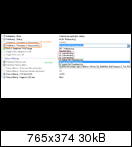- Joined
- May 18, 1997
- Messages
- 55,634
GeForce GTX 680 3-Way SLI & Radeon 7970 Tri-Fire Review - What do you get when you install three GeForce GTX 680 cards for 3-Way SLI and then three Radeon HD 7970 cards for Tri-Fire? You get insanely fast gaming performance and a gameplay experience that begs to be compared delivered by both. We find out which multi-display configuration is better for gaming in Eyefinity and NV Surround.
![[H]ard|Forum](/styles/hardforum/xenforo/logo_dark.png)
